PK Vinod
Classification of histopathology images using ConvNets to detect Lupus Nephritis
Dec 14, 2021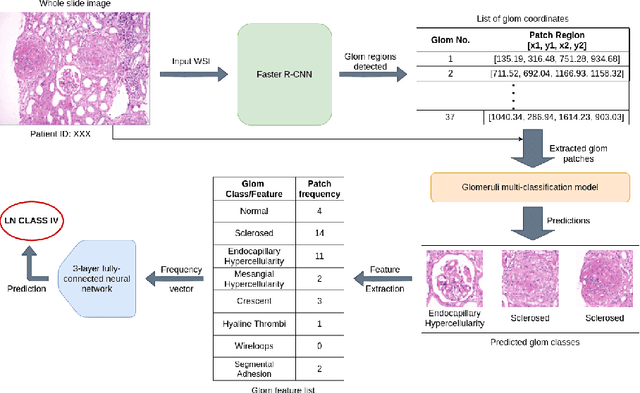
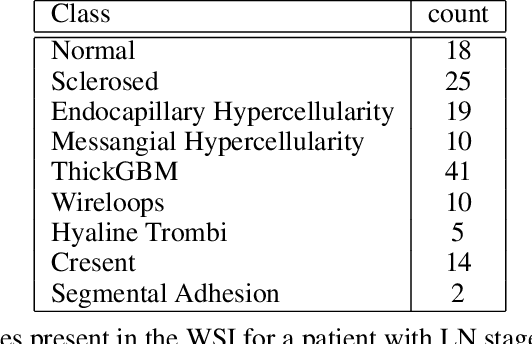

Abstract:Systemic lupus erythematosus (SLE) is an autoimmune disease in which the immune system of the patient starts attacking healthy tissues of the body. Lupus Nephritis (LN) refers to the inflammation of kidney tissues resulting in renal failure due to these attacks. The International Society of Nephrology/Renal Pathology Society (ISN/RPS) has released a classification system based on various patterns observed during renal injury in SLE. Traditional methods require meticulous pathological assessment of the renal biopsy and are time-consuming. Recently, computational techniques have helped to alleviate this issue by using virtual microscopy or Whole Slide Imaging (WSI). With the use of deep learning and modern computer vision techniques, we propose a pipeline that is able to automate the process of 1) detection of various glomeruli patterns present in these whole slide images and 2) classification of each image using the extracted glomeruli features.
Exploring Genetic-histologic Relationships in Breast Cancer
Mar 15, 2021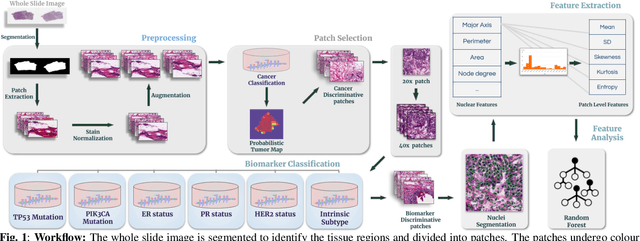
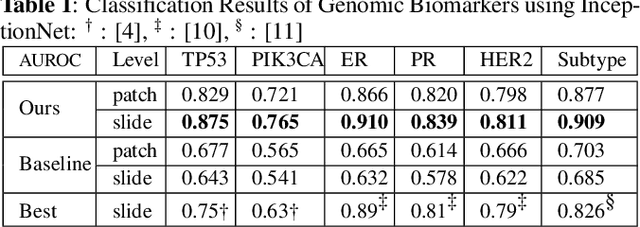
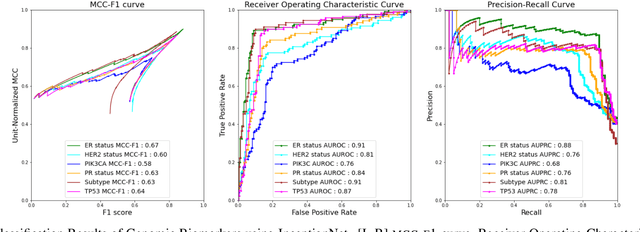

Abstract:The advent of digital pathology presents opportunities for computer vision for fast, accurate, and objective solutions for histopathological images and aid in knowledge discovery. This work uses deep learning to predict genomic biomarkers - TP53 mutation, PIK3CA mutation, ER status, PR status, HER2 status, and intrinsic subtypes, from breast cancer histopathology images. Furthermore, we attempt to understand the underlying morphology as to how these genomic biomarkers manifest in images. Since gene sequencing is expensive, not always available, or even feasible, predicting these biomarkers from images would help in diagnosis, prognosis, and effective treatment planning. We outperform the existing works with a minimum improvement of 0.02 and a maximum of 0.13 AUROC scores across all tasks. We also gain insights that can serve as hypotheses for further experimentations, including the presence of lymphocytes and karyorrhexis. Moreover, our fully automated workflow can be extended to other tasks across other cancer subtypes.
 Add to Chrome
Add to Chrome Add to Firefox
Add to Firefox Add to Edge
Add to Edge